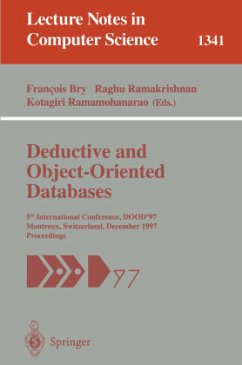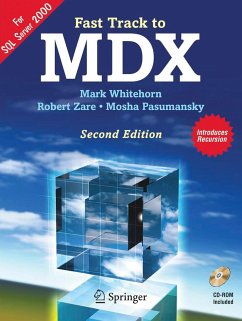
Introduction to Databases
From Biological to Spatio-Temporal
Versandkostenfrei!
Versandfertig in 6-10 Tagen
68,99 €
inkl. MwSt.
Weitere Ausgaben:

PAYBACK Punkte
34 °P sammeln!
This textbook reveals the workings of numerous database systems, enabling readers to develop complex database applications. Students will gain hands-on experience by following the exercises. The theory is complemented by detailed examination of specific applications from a broad range of areas. The text assumes only basic discrete mathematics, linear algebra, and programming knowledge. Features: Provides descriptions of 11 types of databases, and 2 database systems; Concludes each chapter with bibliographic notes and exercises; Examines database design, including issues of database interoperability, data integration, interpolation and approximation, and prediction and data mining; Presents course aids at a supporting website; Covers topics on indexing methods, data visualization, the safety of queries, general evaluation algorithms, the efficient implementation of evaluation algorithms, and the complexity of the evaluation of different types of queries; Structured to allow for flexible course design.
Introduced forty years ago, relational databases proved unusually succe- ful and durable. However, relational database systems were not designed for modern applications and computers. As a result, specialized database systems now proliferate trying to capture various pieces of the database market. Database research is pulled into di?erent directions, and speci- ized database conferences are created. Yet the current chaos in databases is likely only temporary because every technology, including databases, becomes standardized over time. The history of databases shows periods of chaos followed by periods of dominant technologies. For example, in the early days of computing, users stored their data in text ?les in any format and organization they wanted. These early days were followed by information retrieval systems, which required some structure for text documents, such as a title, authors, and a publisher. The information retrieval systems were followed by database systems, whichaddedeven more structure to the data and made querying easier. In the late 1990s, the emergence of the Internet brought a period of relative chaos and interest in unstructured and "semistructured data" as it wasenvisionedthateverywebpagewouldbelikeapageinabook.However, with the growing maturity of the Internet, the interest in structured data was regained because the most popular websites are, in fact, based on databases. The question is not whether future data stores need structure but what structure they need.













